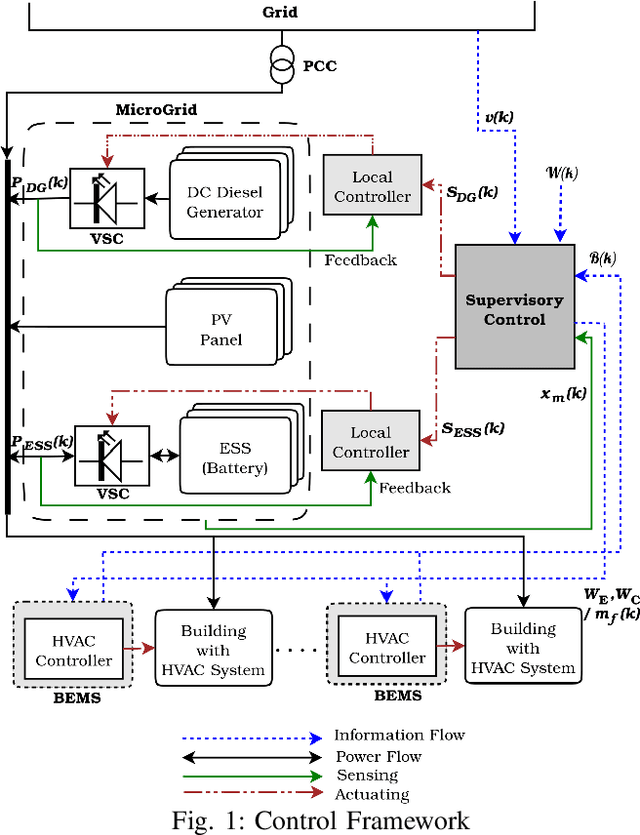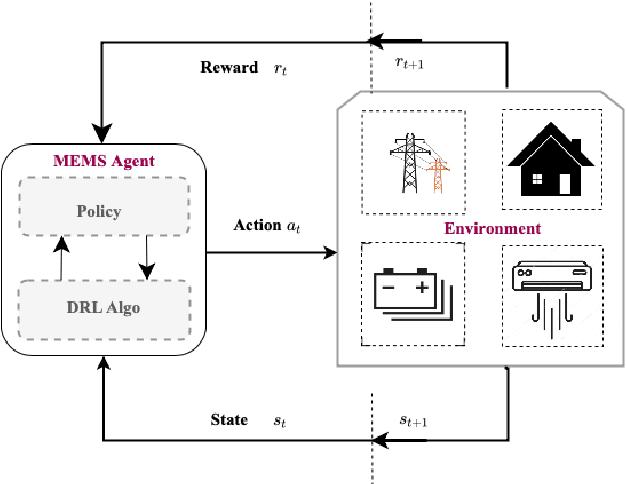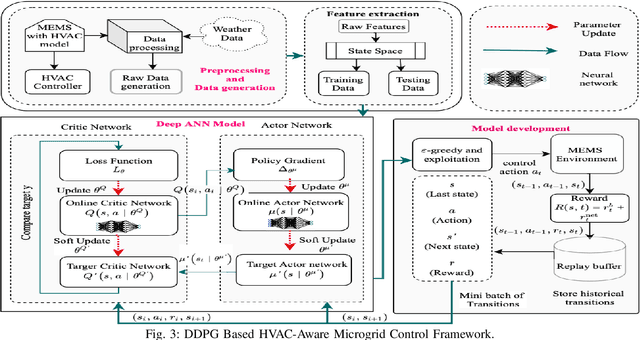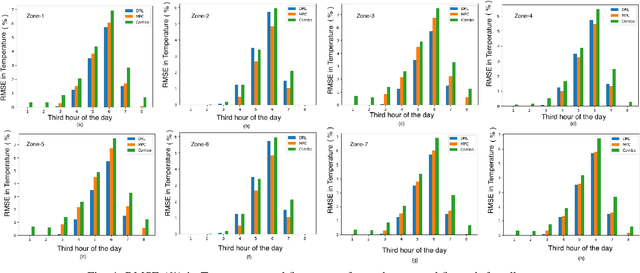Rajib Lochan Jana
Co-designing Intelligent Control of Building HVACs and Microgrids
Jul 18, 2021



Abstract:Building loads consume roughly 40% of the energy produced in developed countries, a significant part of which is invested towards building temperature-control infrastructure. Therein, renewable resource-based microgrids offer a greener and cheaper alternative. This communication explores the possible co-design of microgrid power dispatch and building HVAC (heating, ventilation and air conditioning system) actuations with the objective of effective temperature control under minimised operating cost. For this, we attempt control designs with various levels of abstractions based on information available about microgrid and HVAC system models using the Deep Reinforcement Learning (DRL) technique. We provide control architectures that consider model information ranging from completely determined system models to systems with fully unknown parameter settings and illustrate the advantages of DRL for the design prescriptions.
 Add to Chrome
Add to Chrome Add to Firefox
Add to Firefox Add to Edge
Add to Edge